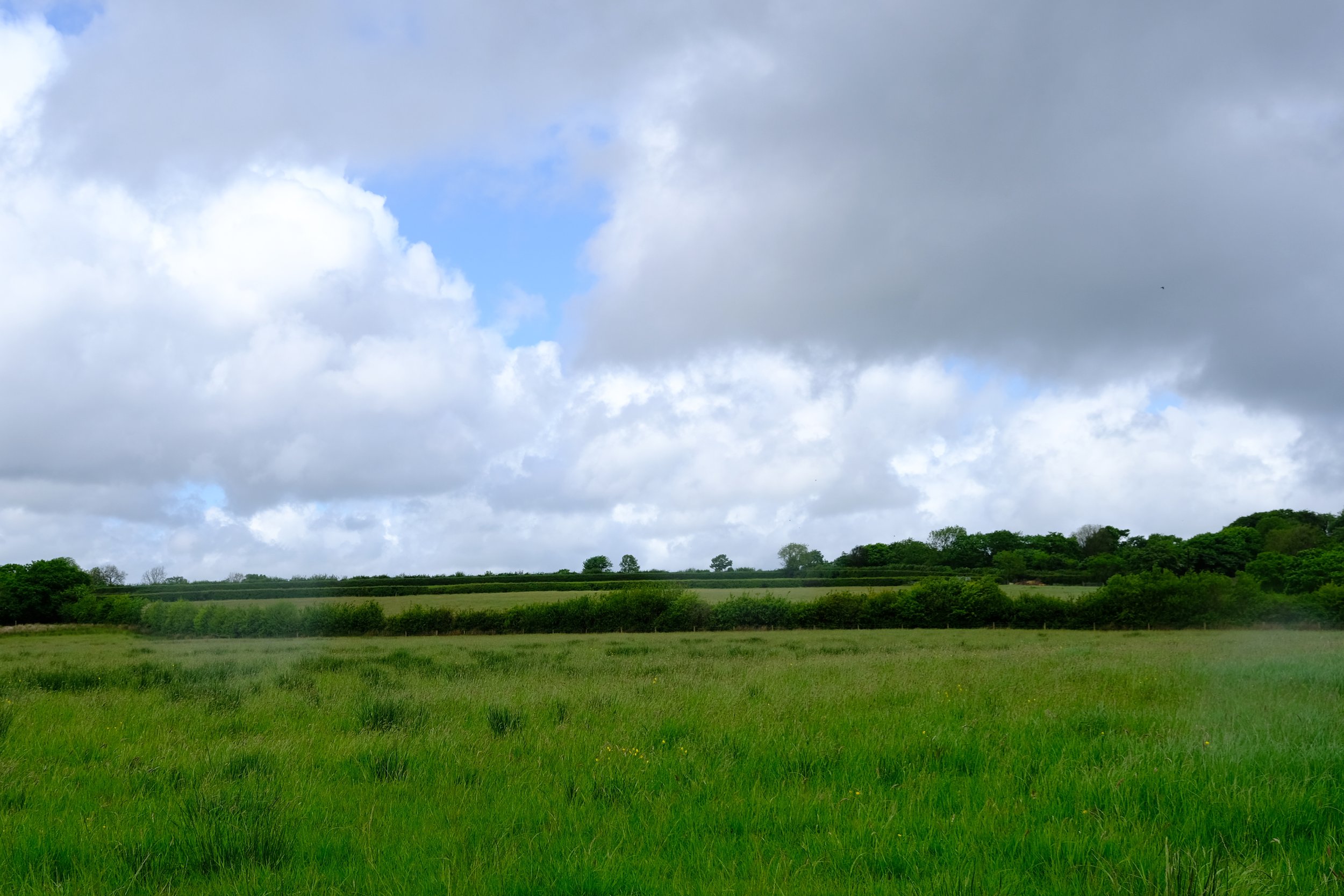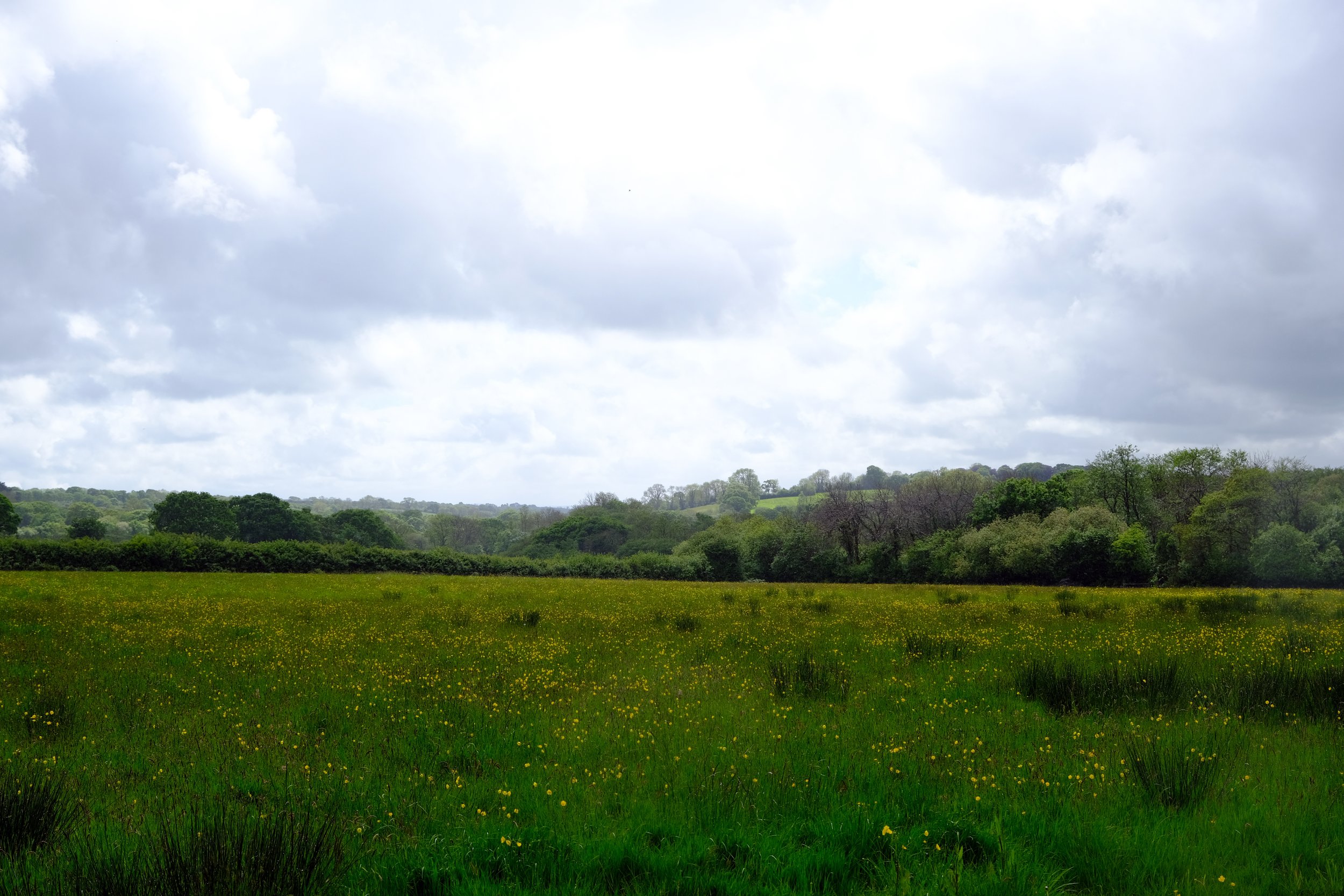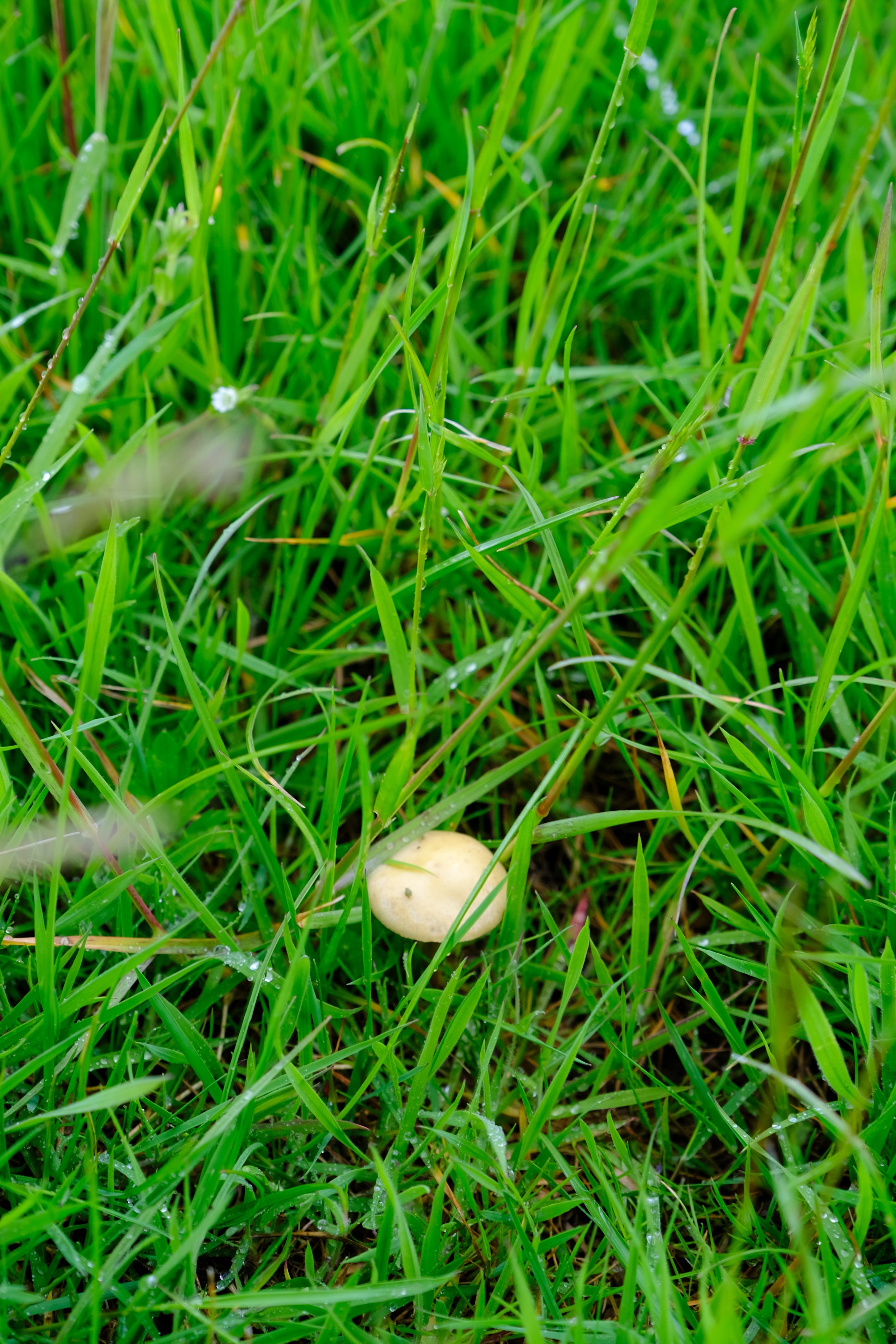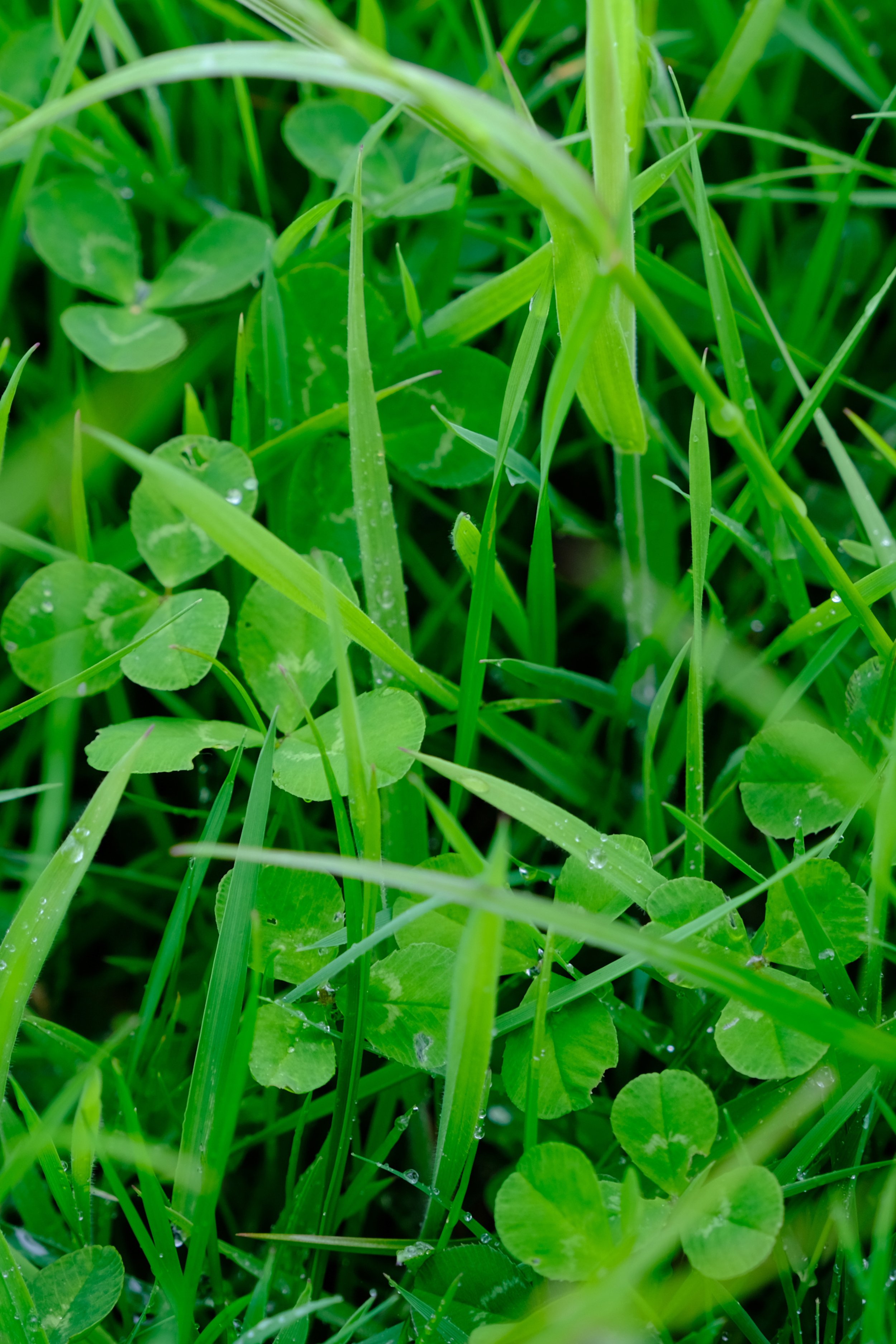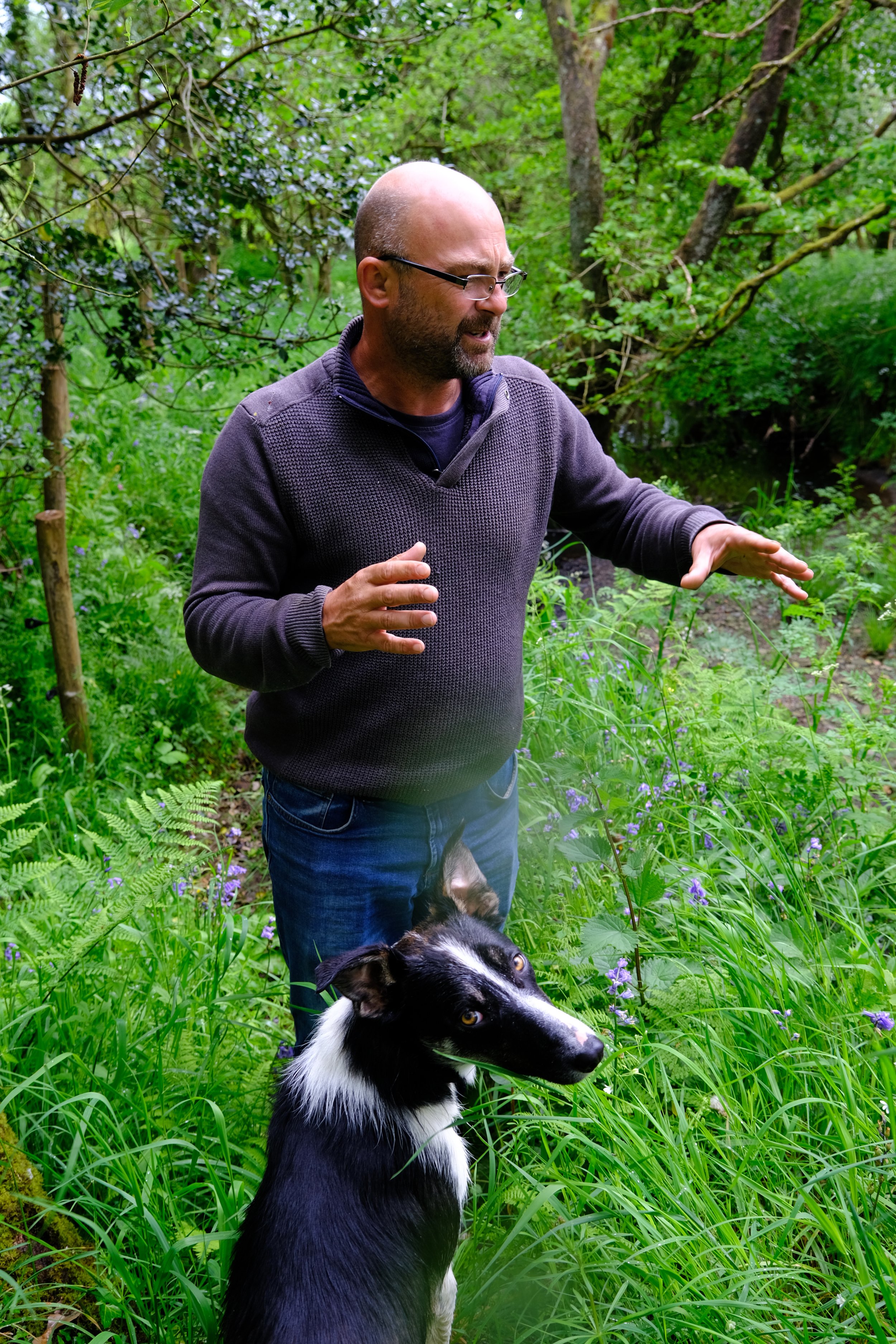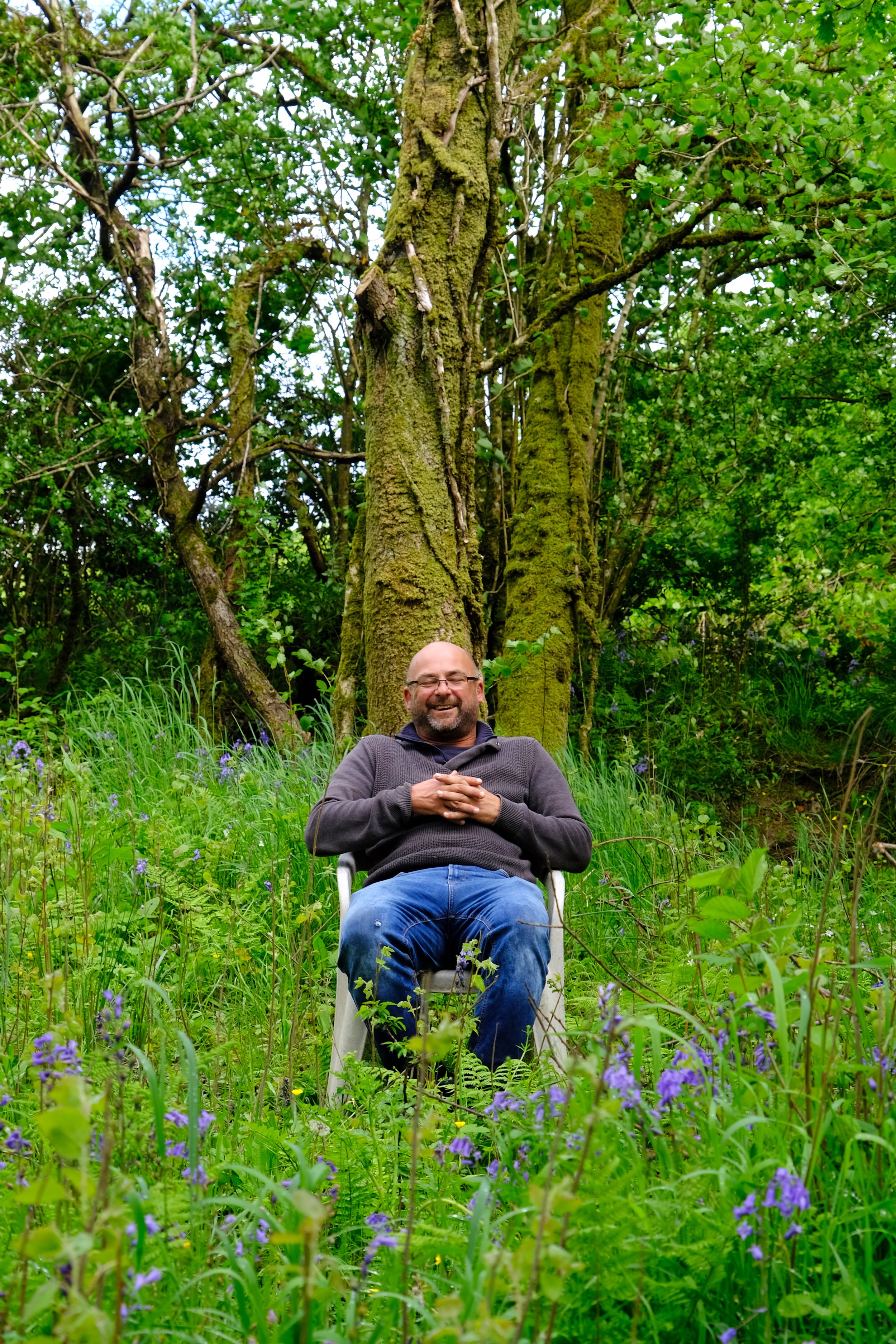The Waiting Game: Matt Chatfield of Cull Yaw
‘The grass is always greener on the other side.’
Now there’s a saying that makes my stomach sink: the notion that a tepid, homogeneous disappointment is all I can expect from my dreams turns me bitter. I refuse it …and I think I can disprove it.
Near the Devon-Cornwall border there’s a place; a tapestry of nurtured nature that keeps my faith aflame. Halwill – a bucolic village whose name means Holy Well – and its rolling hills, swaying woodlands and patchwork fields are unexpectedly getting not only greener, but more fertile in a time when most land is faltering. Instigated by the hand of mutton farmer Matt Chatfield and the hoofs of his flock, the changes here are a hot topic in London culinary circles and conservation groups alike – for good reason. Matt is pasturing land worked by his family for 400 years, and in less than 5 he’s flipped its declining fate.
‘You see the buttercups over there?’ Matt points at a meadow where the flowers abound. ‘That’s a bad sign. It means the soil is acidic.’ The wind brushes through the pasture and he pauses for a moment. Then, carrying on in excitement, he adds, ‘Now, you see the field over there – the buttercups? They’ve nearly gone. You’d be surprised what a bit of sheep shit can do.’ Chuckling, he ambles further into the fields, and continues to talk all things shit, sheep and Cull Yaw.
Cull Yaw is Matt’s mission in mutton. The term ‘Cull Yaw’ refers to a ewe past breeding age, who is pastured and given a longer life before slaughter. These older ewes normally face a harsh reality: diced into dog food or cut up for kebabs. Either way it ends early in the abattoir. Unless Matt is involved.
After his grandparents passed away, Matt quit the pub he was running in Fitzrovia, turned away from his life in London, and headed home to Halwill. ‘I made a promise to my family that I’d do anything I could to save the farm.’ He tells me. ‘The ground was in bad condition, the pastures had nearly no life in them from overgrazing… no fault of my family, they were just doing what they had to like everyone else, but the farm was in trouble.’
Matt’s land had a level of biodiversity equivalent to the pre-industrial era.
For all the bickering and blaming surrounding the conversation in modern agriculture, there is a reasonable – if rather sad – explanation for the state of our land. ‘Post-war the need for food was huge’, Matt explains. ‘The whole grazing and fattening process was massively altered. There was no time to wait, so cattle had to be reared and slaughtered fast. Fertilisers were required to synthetically keep the grass growing, which caused a lot of problems.’ The years of mass famine that later led to mass production, forgotten by most now, took their toll. Yet Matt devised a plan to reverse the damage by employing a most unexpected tool: YouTube videos.
What Matt learnt by watching farmers share their stories online was that when sheep graze and defecate they spread organic matter. Piles of poo turn into dinner for dung beetles and other shredders, leaving behind a crust of dry, insoluble faeces. Then come the worms and other topsoil mixers, who take these treats from up above, down below. This cyclical continuum loosens up compacted land from old herds in excessive numbers and makes the ground fertile again. The field of nearly-no-more-buttercups is the result of this natural cycle and proof that it increases the pH value, and fertility, of soil.
Now, with nutrients adequately distributed, something enchanting is happening: red clovers – dormant for decades in the seed bank – are poking up to bid hello; cuckoo flowers, forget me nots and dandelions darn the land. Even endangered birds, such as the willow-tit have returned to the area, along with deer, and – most unbelievably – signs of beavers nearby, who have been extinct for 400 years in England. This is such an unprecedented achievement that the Eden Project came to investigate, and found Matt’s land had a level of biodiversity equivalent to the pre-industrial era.
As we wander through a pasture Matt suddenly kneels, and announces beaming ear-to-ear: ‘These are the first mushrooms I’ve ever seen here!’ A mushroom above ground is a sign of mycelium underneath in adequate health to encourage reproduction. Normally twenty-five percent of all biodiversity is located within soil, but without the help of natural fertilisers, like sheep, the ground loses its capability to host mushrooms and compost organic matter.
Matt…acts as a coordinator of nature; conducting minimal input before resigning to waiting.
Matt guides me through a thicket of mossy branches and knotted roots into a woodland. Here the changes wrought by his Cull Yaw sheep are overwhelming. What I can only describe as a hinterland of greenery meets us. It feels Mesozoic. Organic matter newly spread throughout the woodland, consumed by fungi and bacteria, has resulted in rocketing shoots of infant grasses, flowers and saplings.
Allowing livestock to graze on land and in woodland with minimum intervention is known as silvo-pasture. Matt, who champions this approach, acts as a coordinator of nature; conducting minimal input before resigning to waiting. The rest is good old-fashioned evolutionarily programming.
The natural plant tannins found in woodlands also reduce animal flatulence by improving digestive function, then adding flavour to the mutton, much like Iberico ham. Matt, now sat on one of his chairs placed throughout the woodland recalls, ‘I spent time out in Spain seeing how Iberico pigs live. The flavour comes from what they eat. After visiting a few other farms I noticed how vital a spectrum of grazing is for the animals.’
In the wood a droning wind plays through the aspens and a gentle bird song ebbs above. Abating momentarily, a stillness settles; a serenity. In the pause Matt tells me how important he finds time spent alone, and a blanket of sentimentality falls as I understand his placement for the chairs. Before I start getting poetic, he stirs: ‘Right, let’s go meet the sheep.’
The Cull Yaw rotate through forty-five acres of land, but due to Matt’s approach, produce the equivalent of one-hundred-and-twenty acres of output in commercial measurement. This works out to a reduction of land use by two-thirds. And with 50% of all habitable land on earth used for agriculture, it’s game changing. The British Farming Awards noticed this achievement, and in only a few years of working his farm, gave Matt the Silver award for Sheep Farmer of the Year.
I’m soon looking at the plump, well-fed, back-ends of several Herdwick ewes. Following us around, they are greeted gently by Matt. All the lead up, the farming research, the startling beauty of the land, comes back to these sheep, and forces me to confront the reality of slaughter; the burning question of ethics. ‘Anything to do with ethicality is tough,’ Matt says. ‘Is killing anything ethical? I don’t know.’
He pauses for a second. Then goes on, ‘I can tell you this: I kill twenty sheep per acre a year. Each sheep supports barn owls, herons, mice, foxes, voles, frogs, and another 10,000 life forms now present here. If I want to grow vegetables, I have to plow the fields, killing everything. It sounds crazy but if I planted veg I’d be committing ecocide.’
The topic must play on his mind. Driving us away from Halwill he suddenly continues, ‘It’s hard, really hard, sending them off for slaughter. But I have to work with nature to keep everything in balance. When they get to Philip Warren, I just fucking hope I’ve done a good job and given them some decent life.’
The processing of the ewes at Philip Warren & Son Butchers is still nothing short of considered and conscious, and is as much a part of Cull Yaw as the pastures and woodland. But this, is for another story…
Matt is the first feature in our ‘The Waiting Game’ farm-to-table trilogy, which will be released over the coming weeks. Read the next story here. Subscribe to our newsletter to stay informed.


